Murk van Phelsum was a Dutch physician, who was the namesake for the lizard genus Phelsuma.

Dirk Hendrik Theodoor Vollenhoven was a Dutch philosopher.

Petrus Camper FRS, was a Dutch physician, anatomist, physiologist, midwife, zoologist, anthropologist, palaeontologist and a naturalist in the Age of Enlightenment. He was one of the first to take an interest in comparative anatomy, palaeontology, and the facial angle. He was among the first to mark out an "anthropology," which he distinguished from natural history. He studied the orangutan, the Javan rhinoceros, and the skull of a mosasaur, which he believed was a whale.

John Jonston or Johnston was a Polish scholar and physician, descended from Scottish nobility and closely associated with the Polish magnate Leszczyński family. The standard author abbreviation Jonst. is used to indicate this person as the author when citing a botanical name.
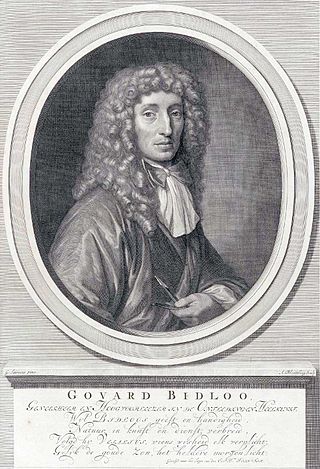
Govert Bidloo or Govard Bidloo was a Dutch Golden Age physician, anatomist, poet and playwright. He was the personal physician of William III of Orange-Nassau, Dutch stadholder and King of England, Scotland and Ireland.
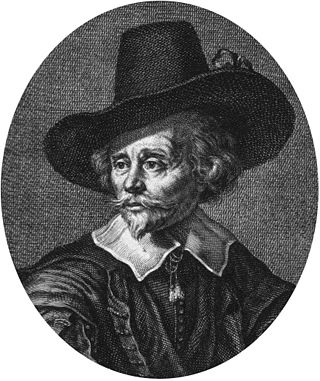
Samuel Coster was a Dutch playwright.
Adriaan Koerbagh was a Dutch scholar and writer who was a critic of religion and conventional morality.

Corneli(u)s Rudolphus Theodorus, Baron Krayenhoff was a physicist, artist, general, hydraulic engineer, cartographer and – against his will and for only a short time – Dutch Minister of War.
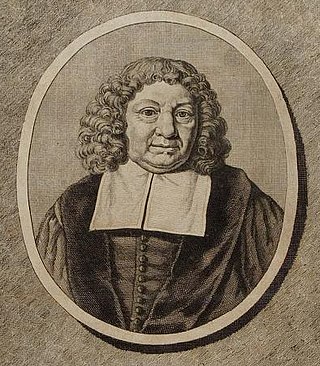
Johannes de Raey was a Dutch philosopher and an early Cartesian.

Steven Blankaart was a Dutch physician, iatrochemist, and entomologist, who worked on the same field as Jan Swammerdam. Blankaart proved the existence of a capillary system, as had been suggested by Leonardo da Vinci, by spouting up blood vessels, though he failed to realize the true significance of his findings. He is known for his development of injection techniques for this study and for writing the first Dutch book on child medicine. Blankaart translated works of John Mayow.

Henricus Aeneae was a Dutch scientist and mathematician.
Jacobus Ruurd "Jaap" Bruijn, was a Dutch maritime historian. He was professor of maritime history at the University of Leiden from 1979 until his retirement in 2003. During his 41-year teaching career as The Netherlands' only university professor of maritime history, he guided the doctoral theses of at least 49 graduate students.
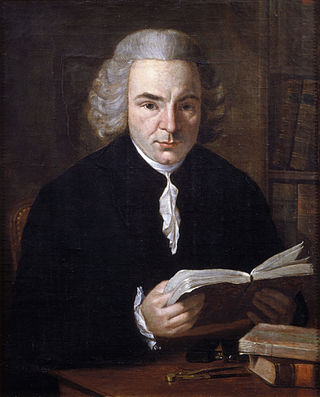
Jean Henri van Swinden was a Dutch mathematician and physicist who taught in Franeker and Amsterdam.

Johannes d'Outrein was a Dutch preacher, writer and author of evangelical theological works. He studied in Franeker, where he earned his doctorate in 1682. He was a preacher in Oost-Zanen in 1685, Franeker in 1687, Arnhem in 1691, Dordrecht in 1703 and Amsterdam in 1708, where he died in 1722. He was a prominent exponent of the Cocceian movement, and Friedrich Adolph Lampe was one of his disciples. Outrein believed that God was "the alliance God of the Netherlands, of his chosen people, who are gathered there and live there".

Fedde Schurer was a Dutch schoolteacher, journalist, language activist and politician, and one of the most influential poets in the West Frisian language of the 20th century.

Johannes Antonides van der Linden (1609–1664) was a Dutch physician, botanist, author and librarian. He was born on 13 January 1609 in Enkhuizen.
Eelco Alta was a Frisian clergyman, theologian, and veterinarian.
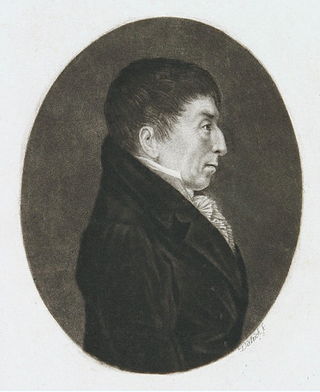
Johan Carl Krauss, was a German-born professor of medicine at Leiden, botanist, taxonomist and author of botanical books. He was the son of Christophorus Adam Krauss, a physician at the court of Prince Hohenlohe, and Dorothea Zolner. He is best known for his publication "Afbeeldingen der fraaiste, meest uitheemsche boomen en heesters".
Hendrik Arent Hamaker was a Dutch Assyriologist, philologist and orientalist. He studied most European and Asian languages, and the history and geography of the East. He was an associate of the orientalist Johannes Hendricus van der Palm, and Theodor Juynboll was among his pupils.

Petrus Wesseling was a German philologist and jurist working in the Dutch Republic. He became famous as a philologist.

















